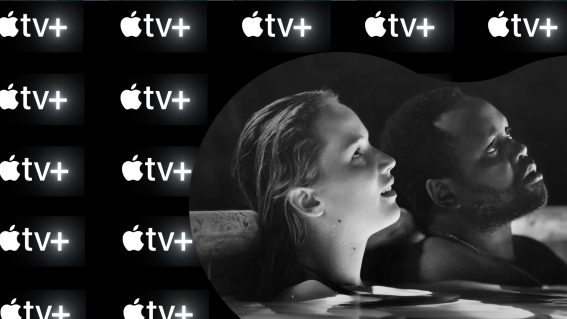Moana represents modern Disney at its best – and possibly its worst
The past, present, and future iterations of Moana mirror Disney’s current identity. For better and, maybe, for worse.

Liam Maguren explores how the past, present, and future iterations of Moana mirror Disney’s current identity—for the better and, maybe, for the worse.
There’s no denying the impact of 2016’s Moana. Critics praised it and audiences loved it, especially Pasifika families who never thought they’d see themselves reflected in the form of a blockbuster Disney flick. Coupled with a production determined to do right by the culture, it felt like representation at its least cynical.
Here we are, eight years later. A lot has changed—with the world, sure, but more specifically with Disney as an entity. Spearheading a gargantuan box office weekend, the triumphant release of Moana 2 comes at a striking time, for it is the focal point of a franchise that represents modern Disney at its best – and possibly its worst.

2016 Disney was a very different Disney
Cast your mind back to 2016, the year Moana came out. Disney was rolling in hits. They had just reignited Star Wars with the mega-successful The Force Awakens followed by the beloved Rogue One. The MCU was in its prime with Infinity War and Endgame tantalisingly in sight. Jon Favreau’s The Jungle Book showed off the exciting potential of photorealistic CGI and Zootopia would go on to win the Oscar for Best Animated Feature.
Calls for diversity in front and behind the camera were finally be heard. Frozen broke the longstanding template for what it meant to be a Disney Princess and Big Hero 6 made sure not to whitewash its voice cast. Disney also put Māori director Taika Waititi in charge of Thor: Ragnarok while Ryan Cooglar would helm a Black-centric production with Marvel Oscar-winner Black Panther.
Moana bloomed with all that goodness, all that inclusiveness, all that freshness. Yes, it was headed by a bunch of white men—Disney renaissance greats Ron Clements and John Musker plus Big Hero 6 duo Don Hall and Chris Williams—but they knowingly avoided the worst case scenario of cultural appropriation and were aided immensely by Polynesian and Māori talent which included the stacked voice cast and the brilliant inclusion of Te Vaka.
A winning oceanic adventure with iconic songs to match, 2016’s Moana felt like a creation motivated by a genuine desire to showcase Pasifika culture through the lense of an animated blockbuster. The story ended with our heroine leading her people forward with a newfound confidence, excited at the possibility of journeying to places unknown. At the time, it seemed like Disney were doing the exact same thing.

The long 8-year gap between Moanas
Since Moana’s release, Disney has gone through a colossal transformation. In 2019, they entered the Streaming Wars with Disney+, opening the Pandora’s Box of all their beloved films—or, to use the soulless parlance of our times, ‘classic content’. The year after, COVID took over the world, causing streaming platforms to bloom and cinema attendance to tank.
This forced Disney’s hand. After a brief stint making people pay too much to watch films like the live-action Mulan at home, they opted to release three Pixar originals—Luca, Turning Red & Soul—directly to Disney+, pulling them from their intended theatrical runs.
Disney’s swarm of live-action remakes never lived up to the creative promise seen in Favreau’s The Jungle Book. Typically ranging from ‘forgettable’ to ‘memorably awful’, seemingly none of the filmmakers behind these films were allowed to divulge from the animated source material (not even Favreau).
We get the business logic: 2017’s Beauty and the Beast and 2019’s The Lion King were colossal box office hits, and they stuck slavishly to the Disney classics. If it ain’t broke, why be original? That’s the attitude Bob Iger embraced when he took over in November 2022, immediately and unapologetically issuing a bunch of sequels from studios Disney and Pixar.

More Moana, and even more Moana
This brings us to Moana 2. The follow-up was originally developed as a Disney+ series back in 2020, but a pivot early this year saw it shift to a theatrically released feature. While the initial conception predates Iger’s takeover, this shift to cinemas certainly falls within his game plan. And it worked—the sequel succeeded massively in its opening weekend, contributing largely to a record-breaking Thanksgiving Box Office for the US.
A serviceably entertaining sequel, Moana 2 makes for a fun addition to the first film that bursts with visual splendour and a heap of chuckle-worthy gags. It’s deeply satisfying to see a more mature Moana demonstrate her experience on the ocean and devotion to her little sister. Surprisingly, the Kakamora are treated with more significance this time around.
But it also feels dedicated to giving audiences more Moana rather than an evolved Moana with story beats mimicking the first film, three sidekicks who are as one-note as the pig and the chicken, and songs that don’t stand up to the original’s. Most troubling, however, is the actual journey, which feels less like a continuation from the first film’s ending and more like an obstacle preventing Moana and the people of Motunui from doing what they set out to do—explore.

A more adventurous sequel would’ve started where Moana 2 ends (IYKYK). But such a move would encourage Moana to significantly grow her perspective of the world, and fundamentally change who she is as a person.
I doubt this modern Disney would encourage that, especially with their most iconic characters. Mickey will forever be Mickey. Ralph’s always gonna Wreck It. Belle will dance with The Beast in the dining hall of eternity. That’s recognisable. That’s merchandisable.
To change Moana is to change her brand, and the worst thing about modern Disney as both a studio and a company is its unwillingness to do so. To create tales as old as time, they freeze their characters in amber and make them as plastic as the toys they distribute en masse.
It’s ironic, really, given how growth contributed significantly to another Disney hit this year: Pixar’s Inside Out 2. Boasting a timeframe between original and sequel similar to Moana, kids in the single-digit age brackets when the first one came out in 2015 are almost all teenagers now, essentially growing up with Riley. Waves of kids younger than them have been able to catch it on Disney+, magnifying the number of fans eager for the follow-up.

As such, each passing year contributes significantly to audiences’ anticipation. The success of 2024 legacy sequels like Beetlejuice Beetlejuice, Gladiator II, and even bloody Twisters is proof of that. Same with Wicked—it took two decades for the musical hit to go from stage to screen—and Deadpool & Wolverine—the partial result of a decade of flirting between Ryan Reynolds and Hugh Jackman.
Meanwhile, interest in the MCU and Star Wars has waned significantly since the first Moana’s release, each universe pumping out too many middling films and shows at too fast a rate to allow any anticipation to build.
If Disney won’t allow their characters to change for the benefit of storytelling, they can at least acknowledge the benefit of allowing properties to breathe and audiences time to build excitement about a sequel. While Moana 2’s tremendous financial success is a big Disney win for multiple reasons (catering to diverse audiences, valuing cinema over streaming, etc.), it unfortunately enables the company’s worst trait—pushing beloved films into the machine of efficient content (re)creation.
So what lessons will the studio learn from all this? I suspect we’ll have to wait until the release of 2026’s live-action Moana.


























